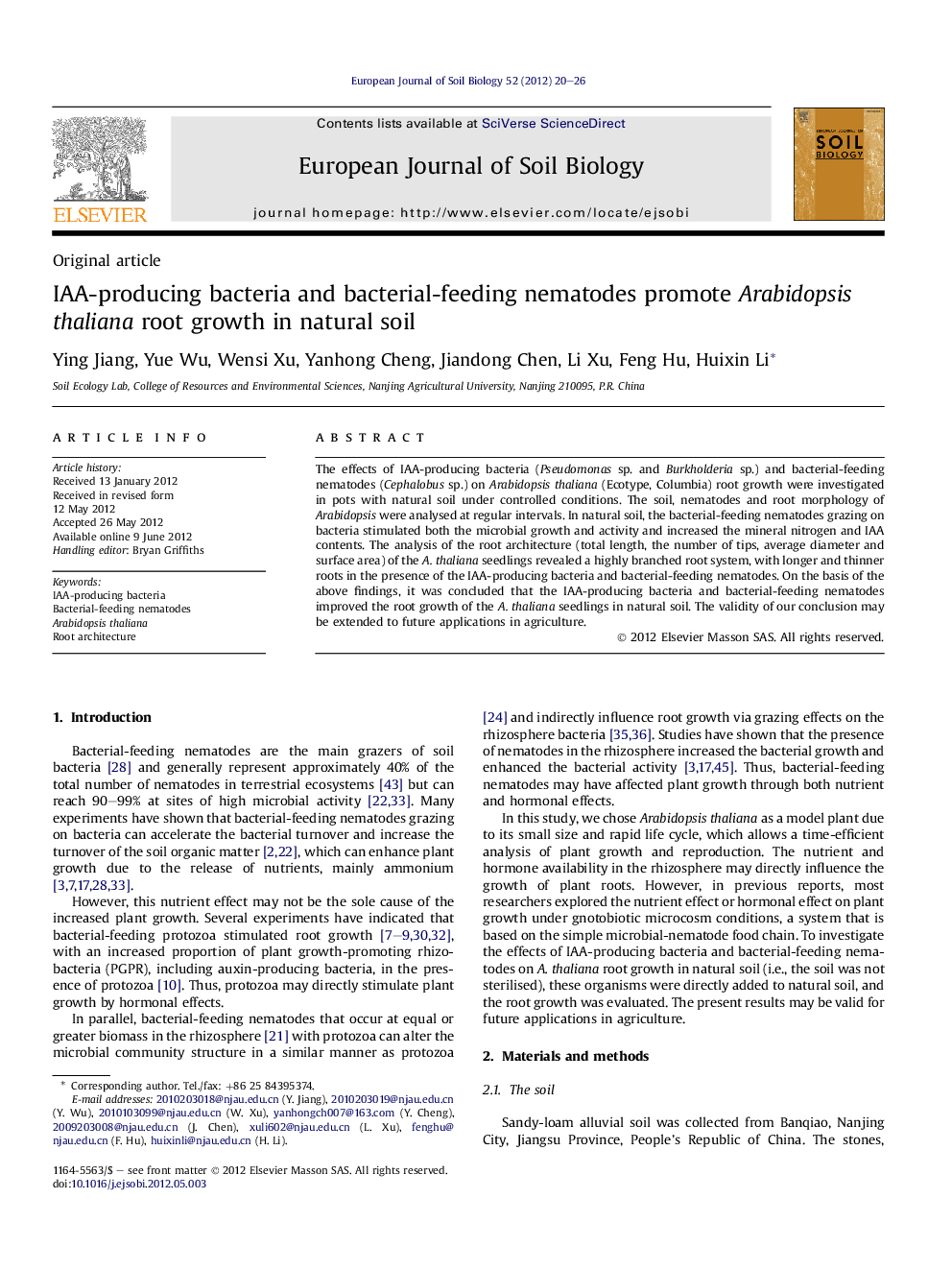| Article ID | Journal | Published Year | Pages | File Type |
|---|---|---|---|---|
| 4392055 | European Journal of Soil Biology | 2012 | 7 Pages |
The effects of IAA-producing bacteria (Pseudomonas sp. and Burkholderia sp.) and bacterial-feeding nematodes (Cephalobus sp.) on Arabidopsis thaliana (Ecotype, Columbia) root growth were investigated in pots with natural soil under controlled conditions. The soil, nematodes and root morphology of Arabidopsis were analysed at regular intervals. In natural soil, the bacterial-feeding nematodes grazing on bacteria stimulated both the microbial growth and activity and increased the mineral nitrogen and IAA contents. The analysis of the root architecture (total length, the number of tips, average diameter and surface area) of the A. thaliana seedlings revealed a highly branched root system, with longer and thinner roots in the presence of the IAA-producing bacteria and bacterial-feeding nematodes. On the basis of the above findings, it was concluded that the IAA-producing bacteria and bacterial-feeding nematodes improved the root growth of the A. thaliana seedlings in natural soil. The validity of our conclusion may be extended to future applications in agriculture.
► The addition of bacteria and nematodes stimulated microbial activity. ► The addition of bacteria and nematodes increased mineral nitrogen and IAA content. ► The addition of nematodes resulted in longer and thinner Arabidopsis roots. ► The promotion of Arabidopsis root growth was better for nematodes than bacteria. ► We suggest adding a combination of nematodes and bacteria to promote plant growth.
